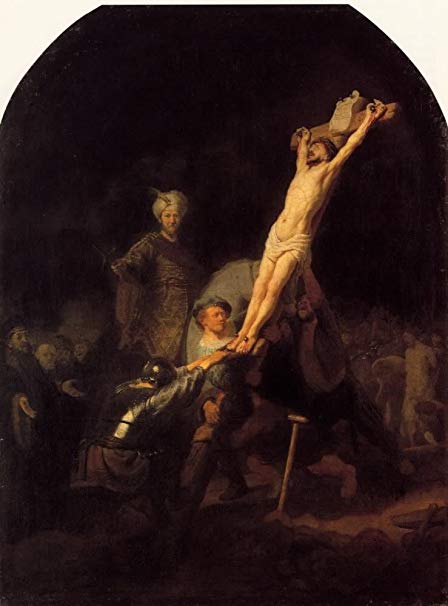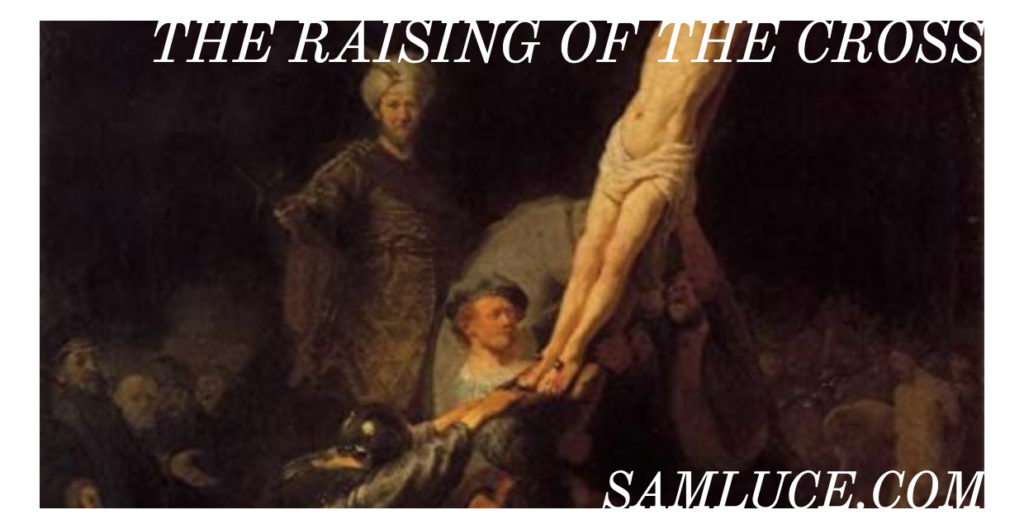One of the truths that were recovered in the Reformation was the power of the Cross of Christ. The truth of salvation by grace alone through faith alone in Christ alone. It was during the time leading up to the Reformation there was a focus on our works what we could do in this life and after this life to be pleasing to God. On Good Friday we are reminded of the need for the Cross of Christ. Living in light of the Cross changes how you live because it changes why you live.
David Brainerd said it this way “I found that when my people were gripped by the great doctrine of Christ and Him crucified, I had no need to give them instructions about morality.” Living in light of the cross changes you because you see that Christ was crucified for your sin and by your sin.
The reach of the Reformation went far beyond Germany and began to shape culture. We see this in the life and work of Rembrandt (1606-1669). “Rembrandt had flaws in his life, but he was a true Christian; he believed in the death of Christ for him personally. In 1633 he painted the Raising of the Cross for Prince Frederick Henery of Orange.” Francis Schaeffer

In his painting, The Raising of the Cross Rembrandt painted Christ being crucified Rembrandt showed how the preaching of the Reformation had profoundly affected him. Rembrandt paints himself in his own painting. Rembrandt is the man in blue raising Christ upon the cross.
“He is stating for all the world to see that his sins had sent Christ to the cross. Rembrandt’s biblical base enabled him to excel in painting people with psychological depth. Man was great, but man was also cruel and broken, for he had revolted against God. “
Francis Schaeffer
Rembrandt saw himself as guilt. What is interesting to note is the fact that he not only painted himself as the one raising the cross in it’s place but he is also the Commander on the horse behind in charge and overseeing the death of Christ. What is striking is the commander isn’t looking at those carrying out the punishment he is staring at the person painting the picture. He is looking straight at Rembrandt as he is painting. He is looking at you and me as we are taking the painting in. He is looking to Rembrandt for orders. Rembrandt a child of the Reformation understood the weight of his sin and the power of the cross.
The last thing that stands out in this picture is the grave and the shovel in the bottom righthand corner. This grave is not for Christ because he was buried in a tomb this grave is the call to Rembrandt and to you and I to die in Christ to die with Christ and for our sinful man to be buried to await newness of life.
Good Friday is only as good as the promise of God. Rembrandt was well aware of his sinfulness. He was well aware that he was more than just “broken”. He was responsible for condemning Christ to the cross and for raising the cross in it’s place and his only hope was not to do better or try harder but to die to sin and be buried and experience a new birth new life the cross guarantees. May we this Easter season be aware of the depth of our sin and the greater depth of his grace.


Sam Luce,
As an artist I have admired Rembrandt and his works. Many years before reading your treatise here, I had read Francis Sheaffer’s words regarding Rembrandt and decided my art should be faithful to my creator and not just popular themes of going along with a degrading moral order in our world. TO that end I mostly paint nature in a representational style and often incorporate allegorical items pointing to Christ and the cross.